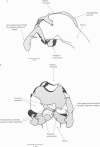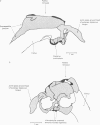Abstract
This study has investigated changes in intra-articular hydrostatic pressure in the knee joints of normal dogs in response to continuous and stepwise infusions of fluids. The relationship between pressure and volume in the joint was examined over the pressure range of -8 to +50 mmHg, and also at much higher pressures often associated with joint disease or injury. The effects of joint angle and dog weight on the pressure-volume relationship and on elastance of the dogs' knees were also examined. With liquid paraffin B.P. the pressure was found to increase more with each unit volume infused at subatmospheric pressures than at pressures around atmospheric, and increased more again at higher pressures. The pressure-volume curve with saline infusions was affected by egress of fluid from the joint at supra-atmospheric pressure. Above +5 mmHg the rise in pressure per unit volume infused was less than that for paraffin at the same volume. Elastance and compliance of the normal joint capsule were calculated from the pressure-volume data. Elastance was high at subatmospheric pressures, decreased rapidly as atmospheric pressure was approached and rose as a linear function of pressure above 12 mmHg. The biphasic shape of the elastance-pressure curve is discussed, and explanations for the shape are suggested. After intra-articular pressure in the knee was raised by infusion of paraffin oil the joint was moved through the range of positions from 125 deg extension to 50 deg flexion. Intra-articular pressure did not change across the range 125-110 deg. However, increasing the angle of flexion from 110 to 50 deg resulted in a rise in pressure which became steeper for each volume increment. Increasing intra-articular fluid volume caused a decrease in the total range of movement of the joint. The pressure-volume curves measured at extended angles of 110, 125 and 140 deg, where the starting pressures were subatmospheric, were the same. At flexed joint positions of 80 and 50 deg, where the starting pressures were supra-atmospheric, the pressure-volume curves became steeper with greater flexion. Elastance of the joint tissues increased with flexion. The elastance at each joint angle depended also on the volume or pressure. Significant differences were found to exist between pressure-volume curves for three groups of animals of different weight.(ABSTRACT TRUNCATED AT 400 WORDS)
Full text
PDF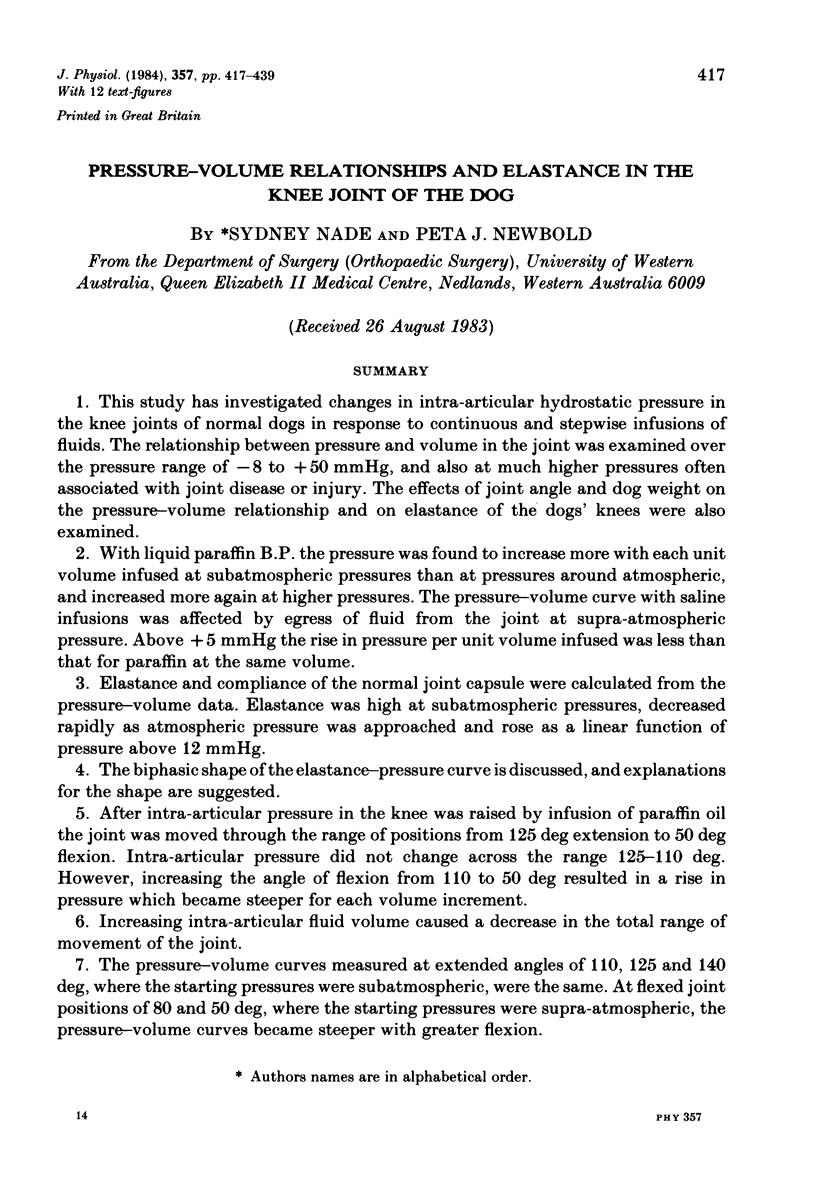
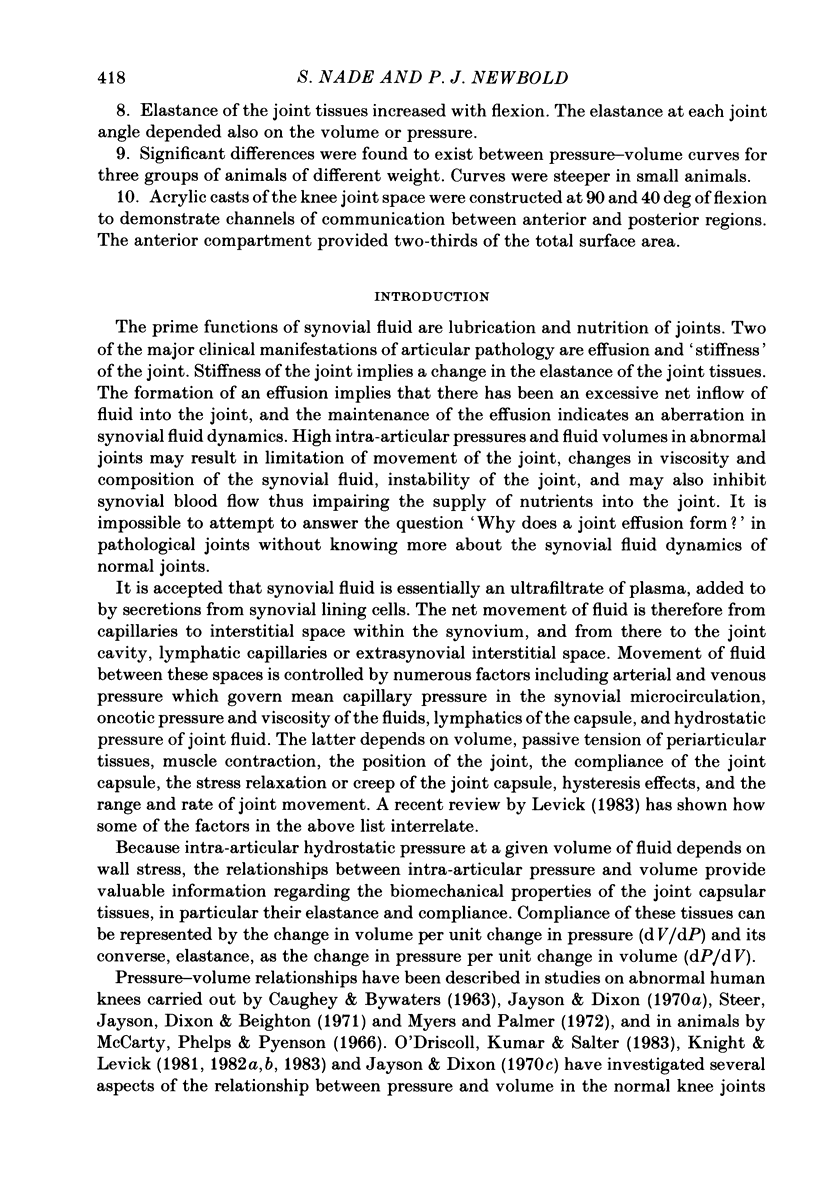
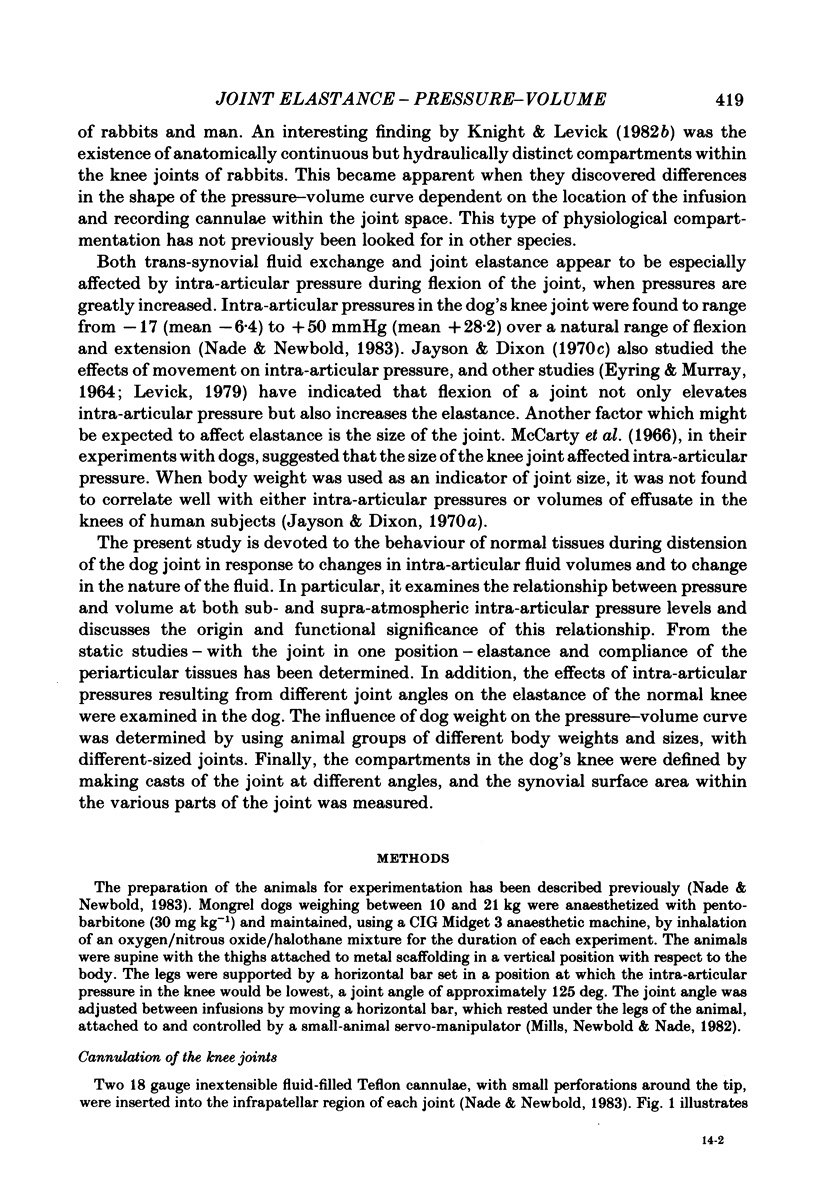
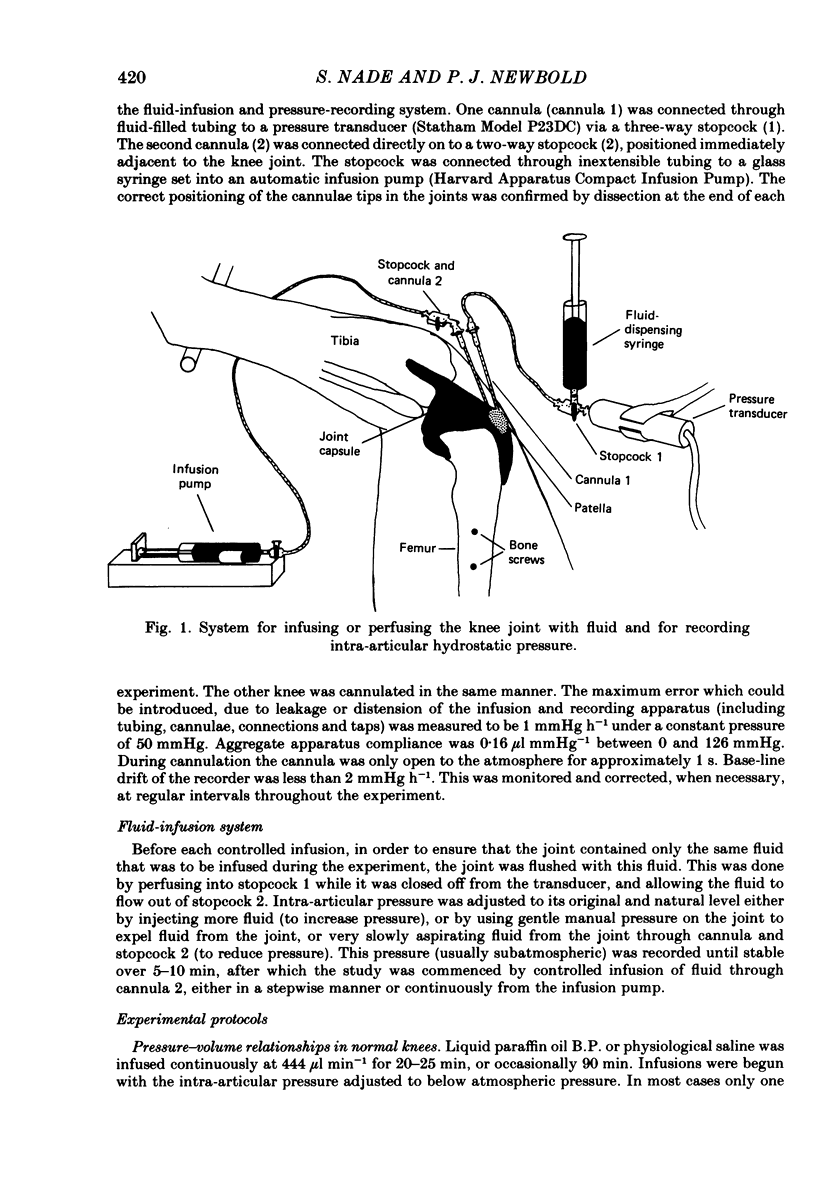
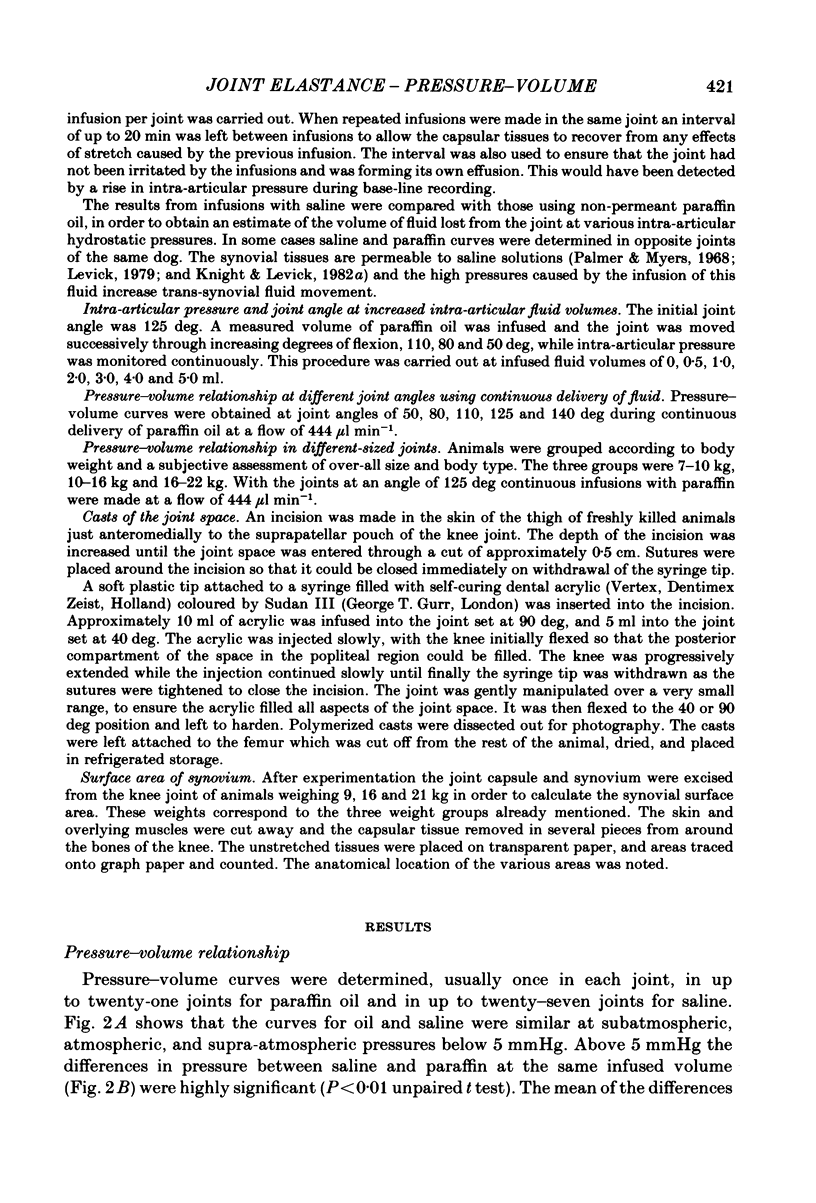
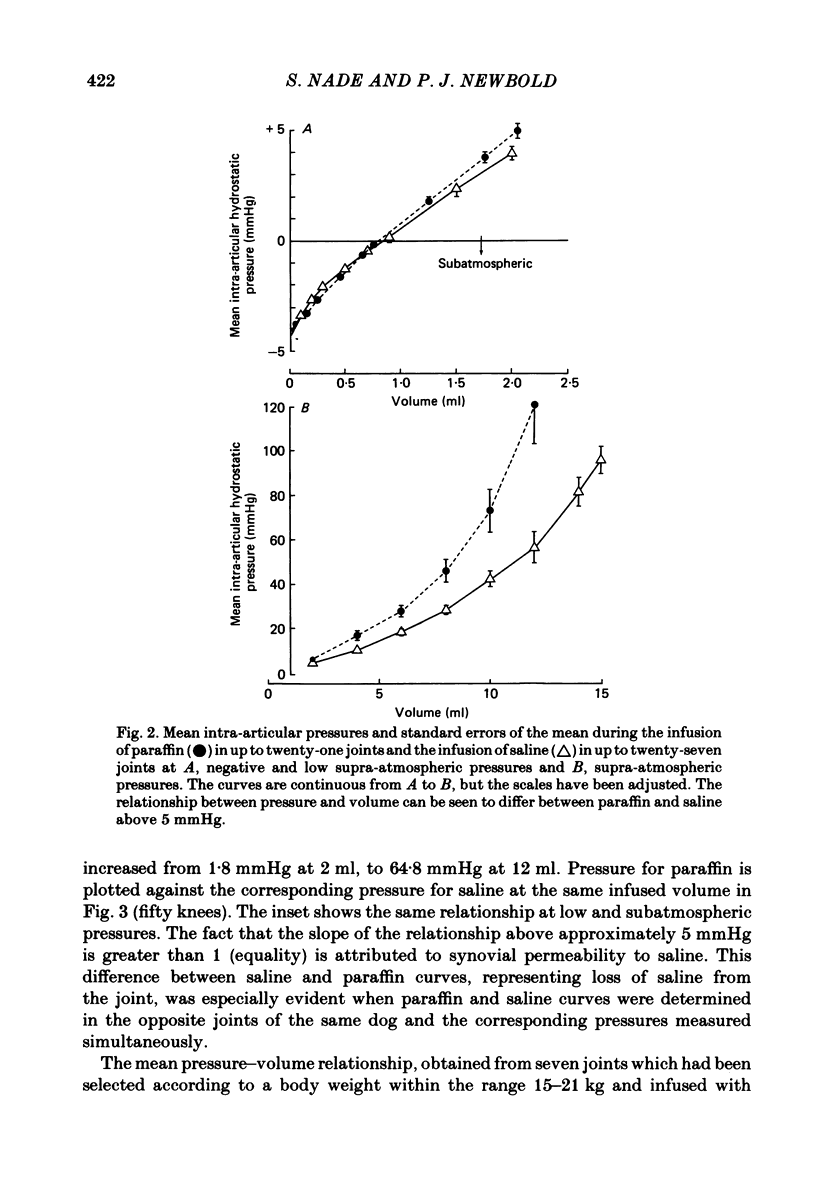
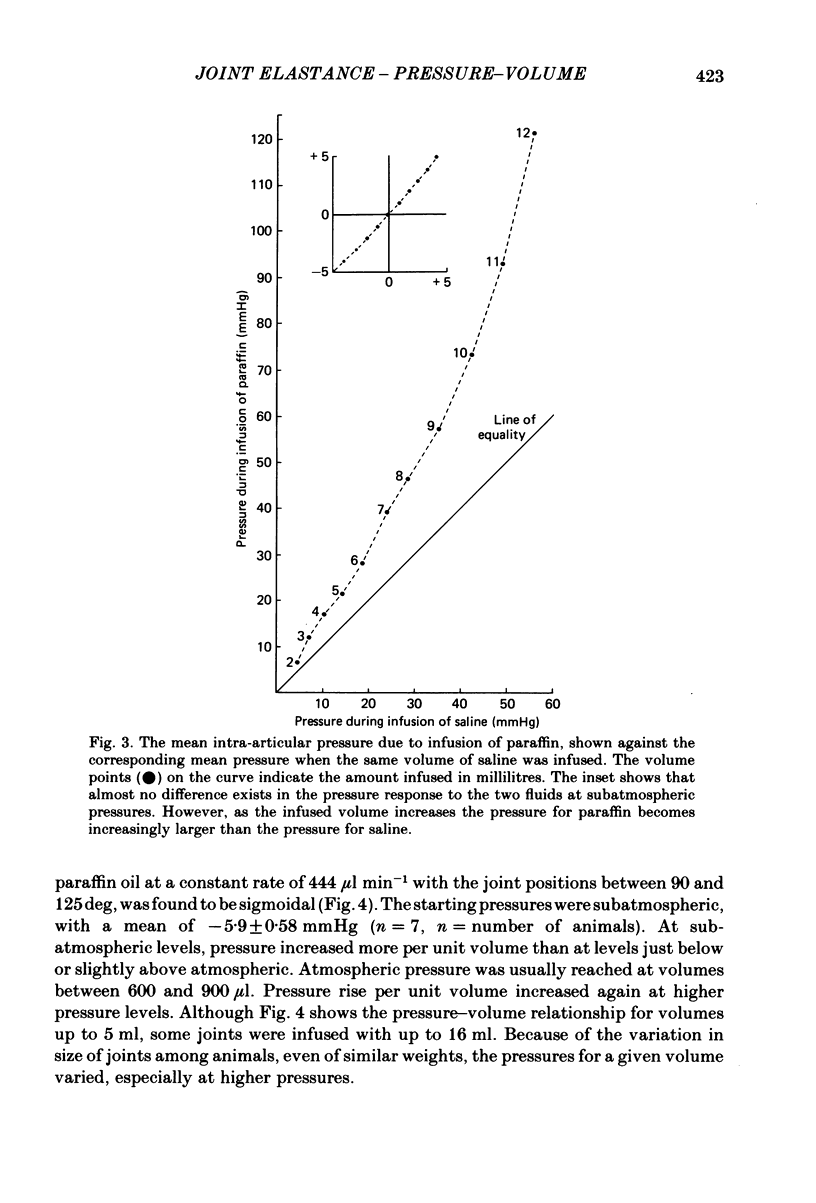
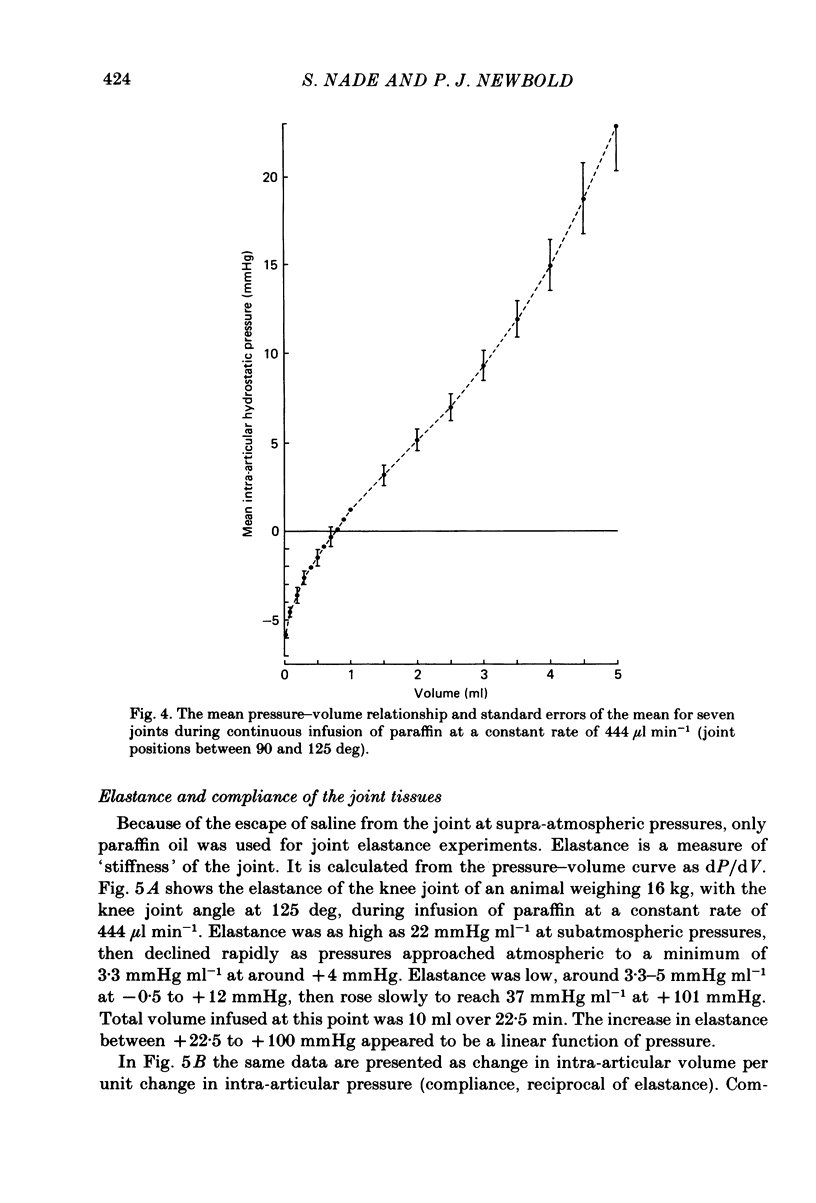
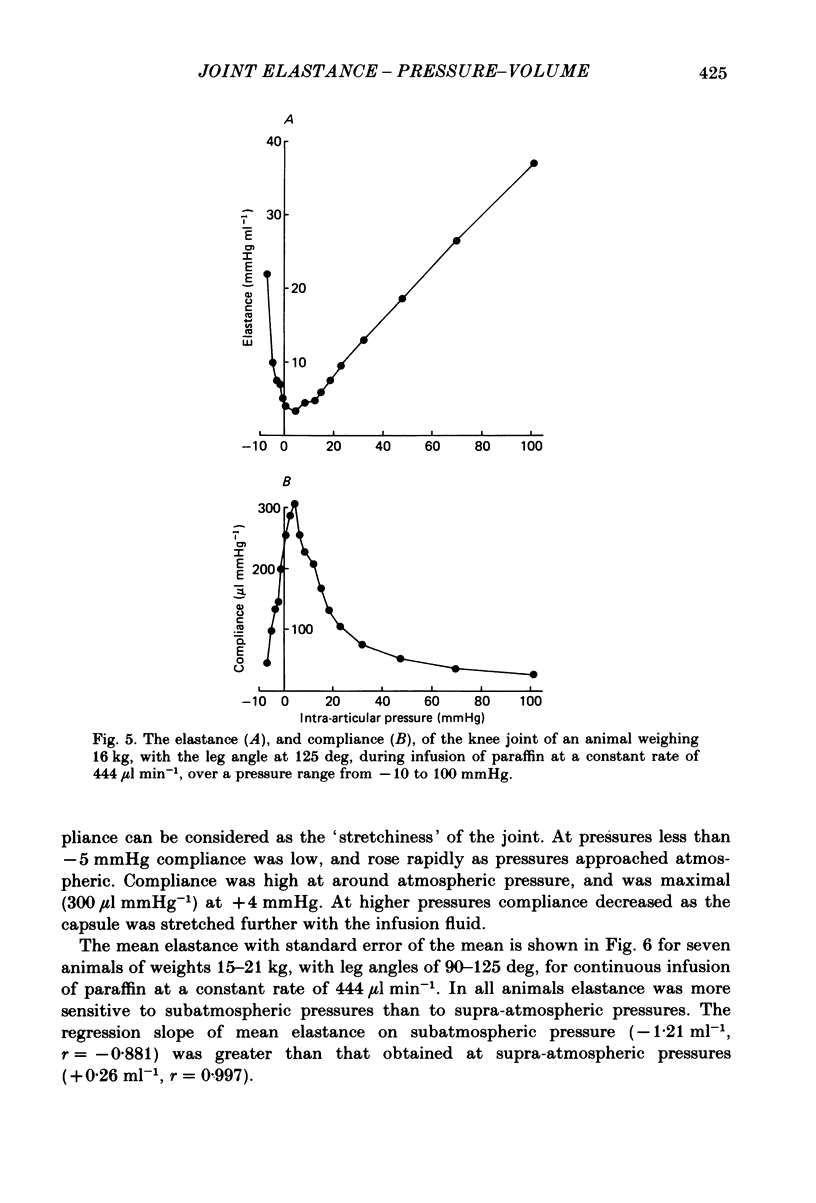
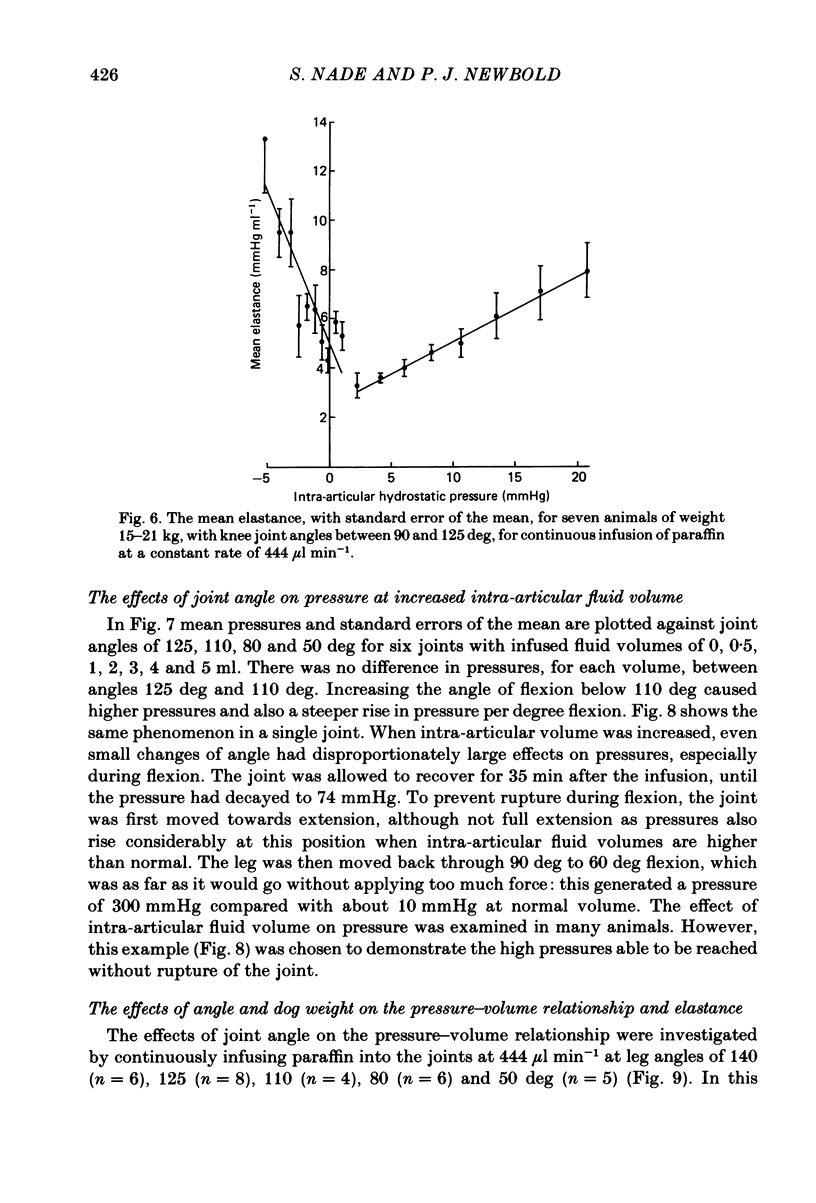
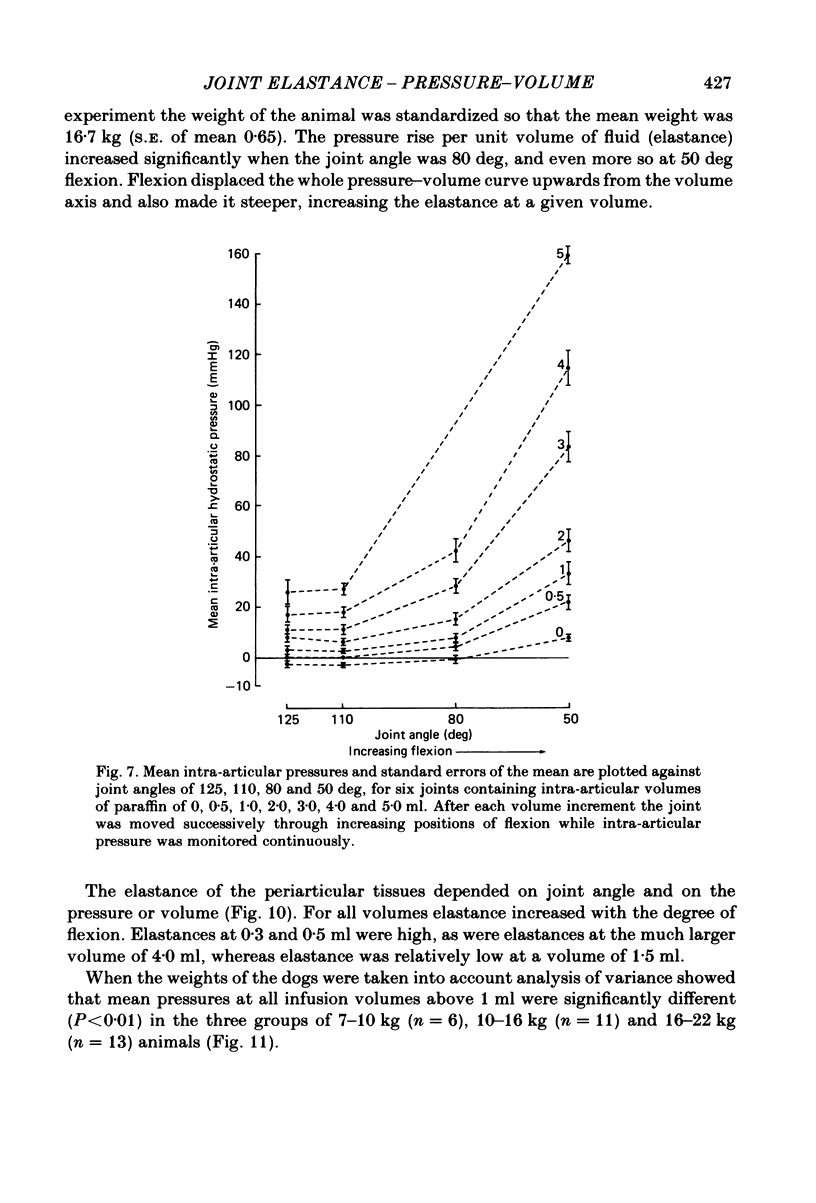
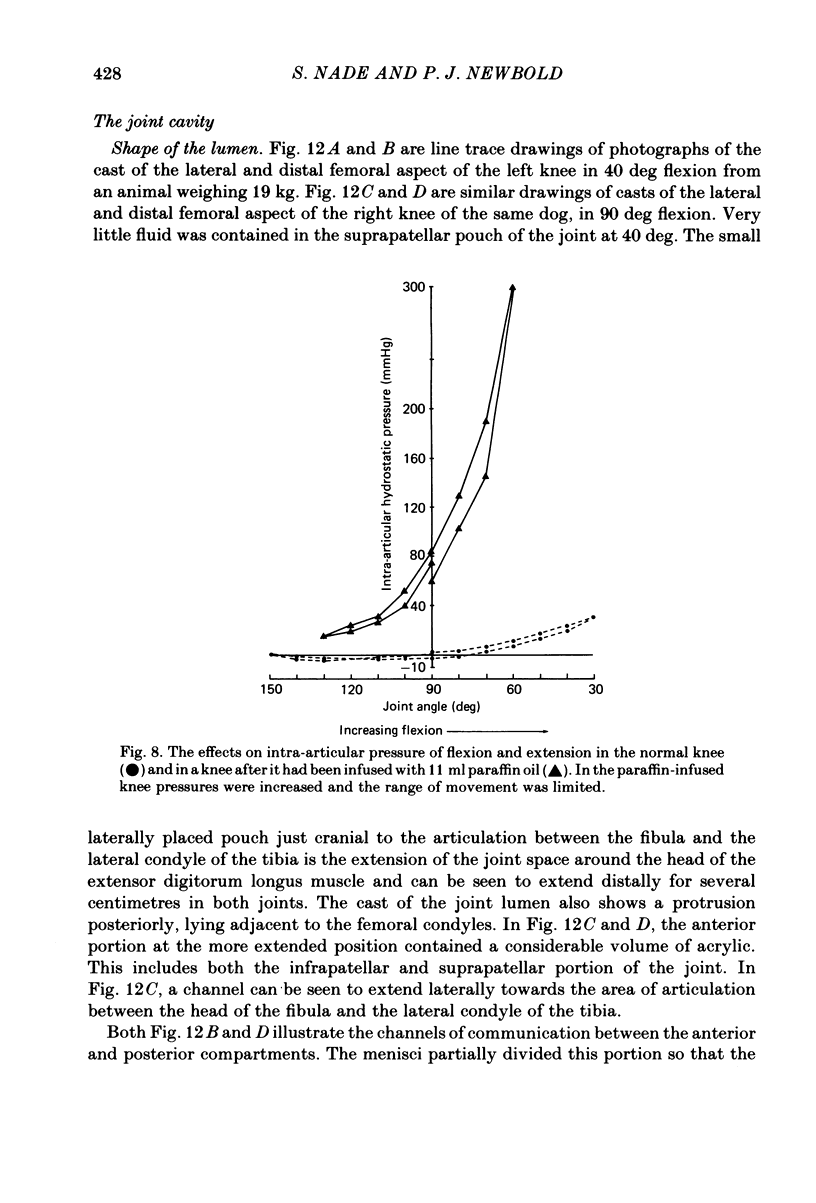
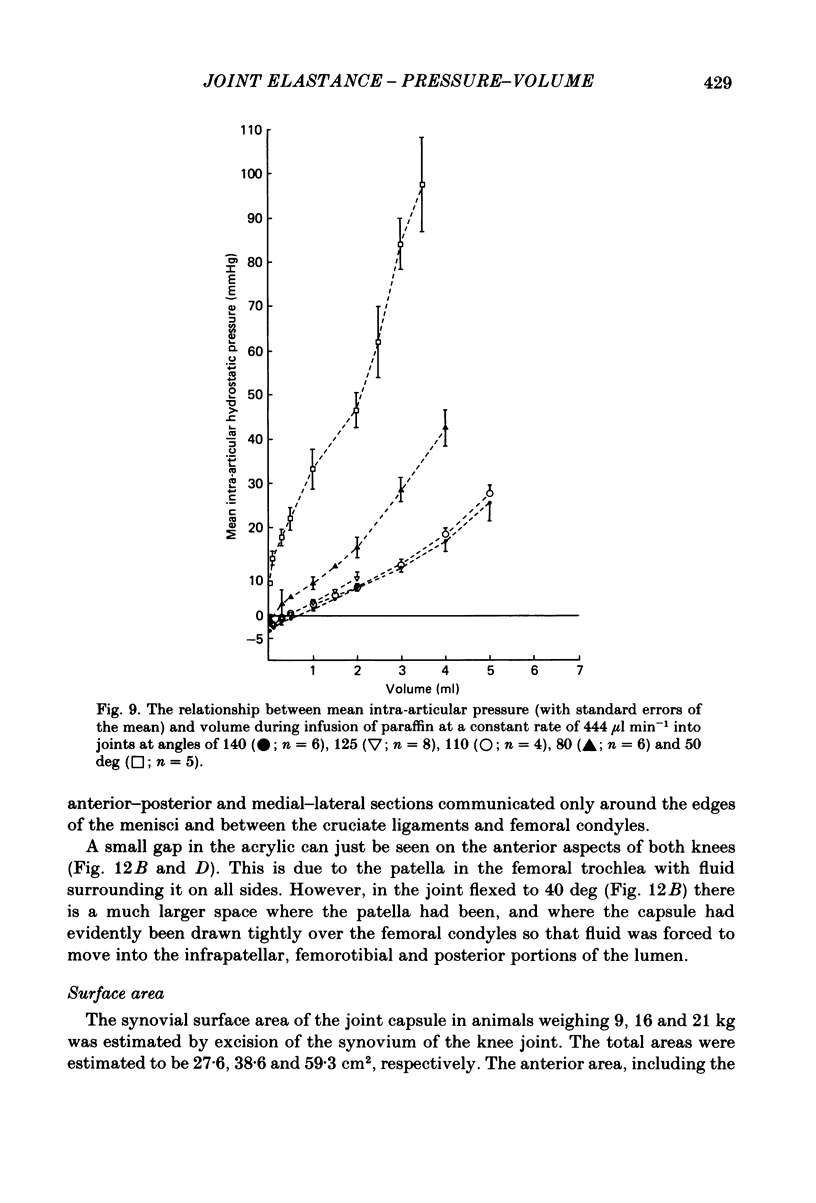
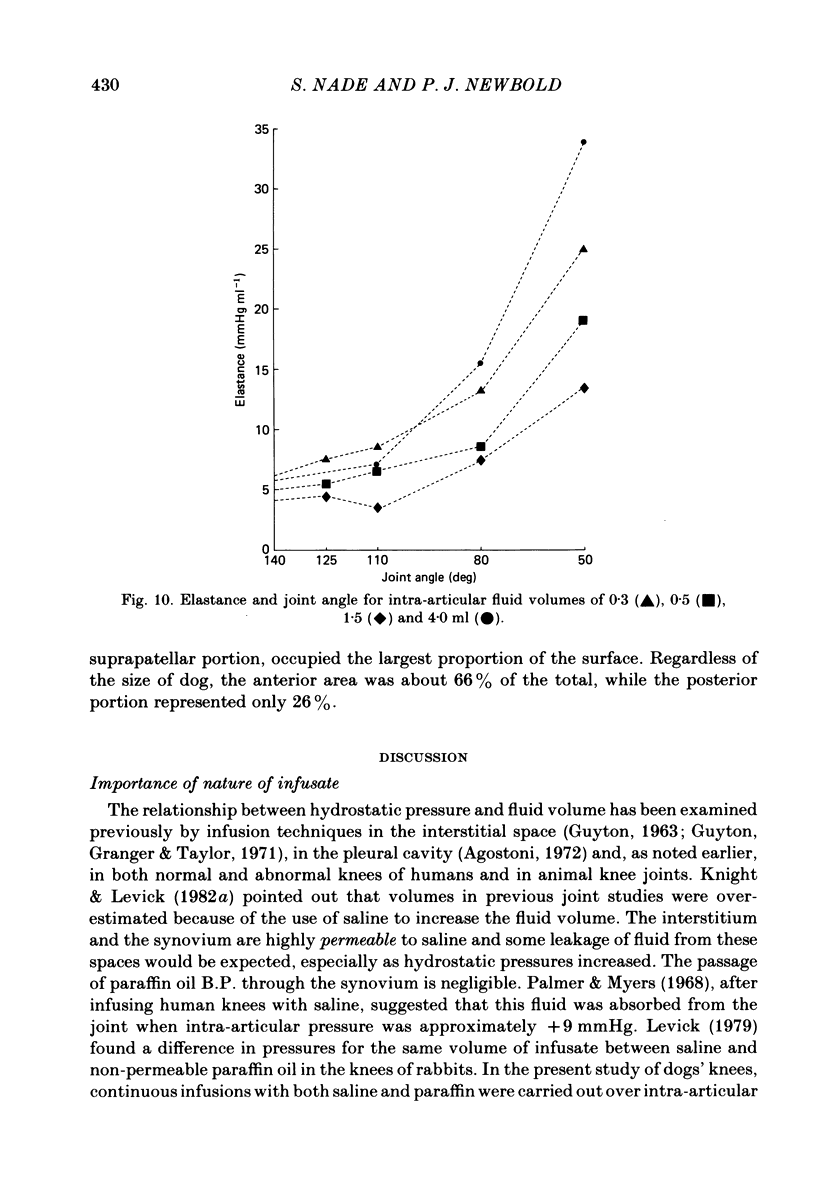
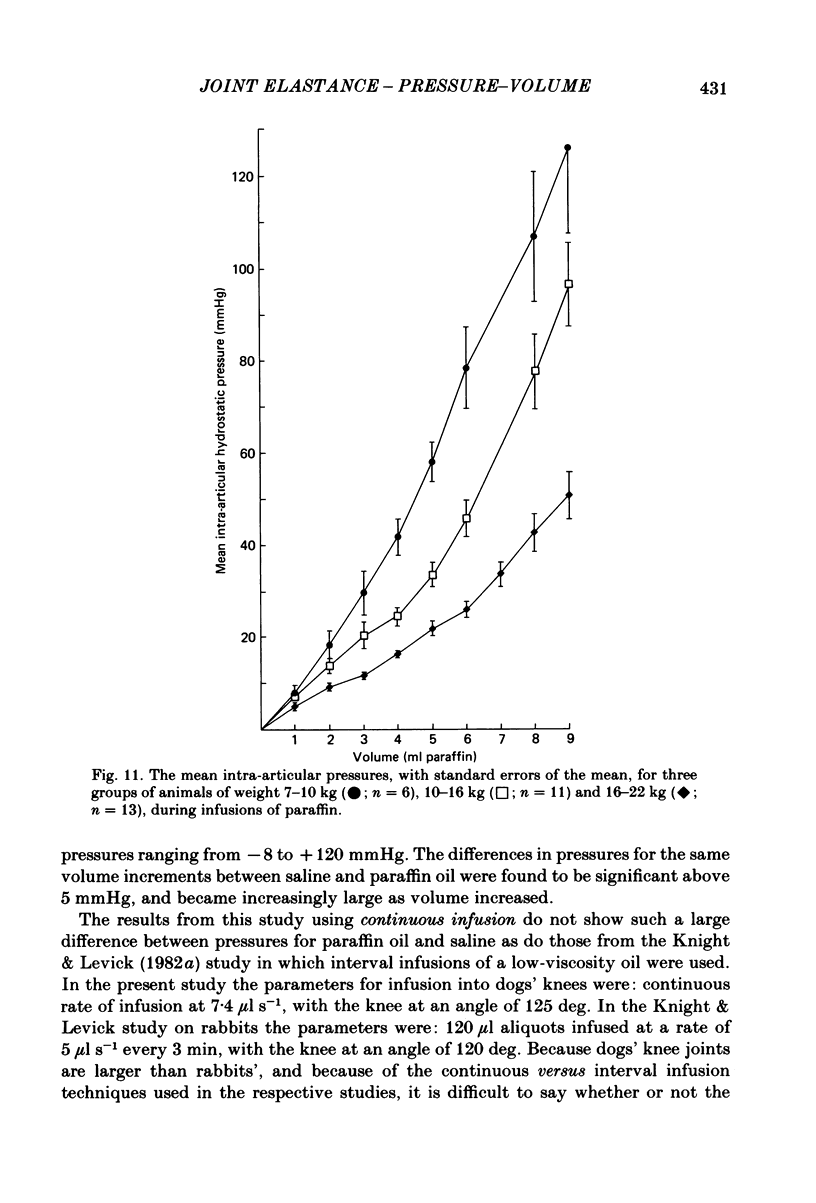

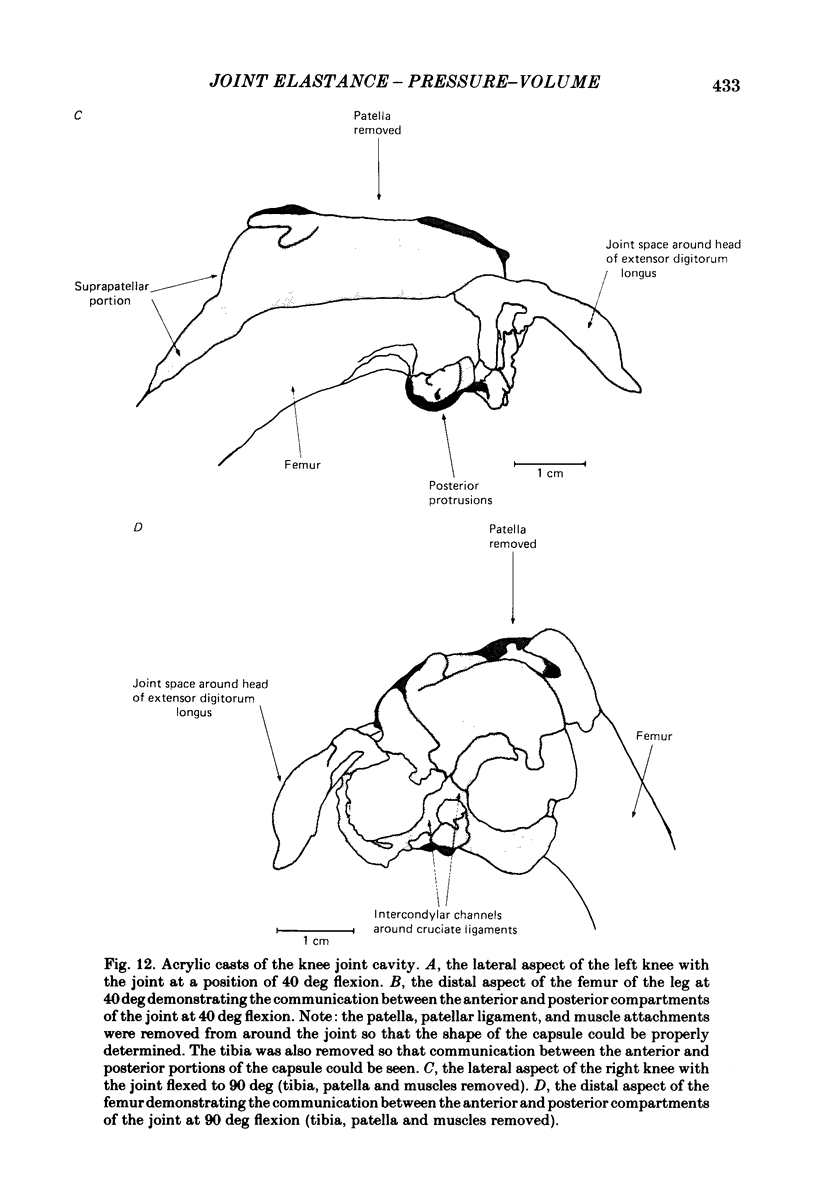
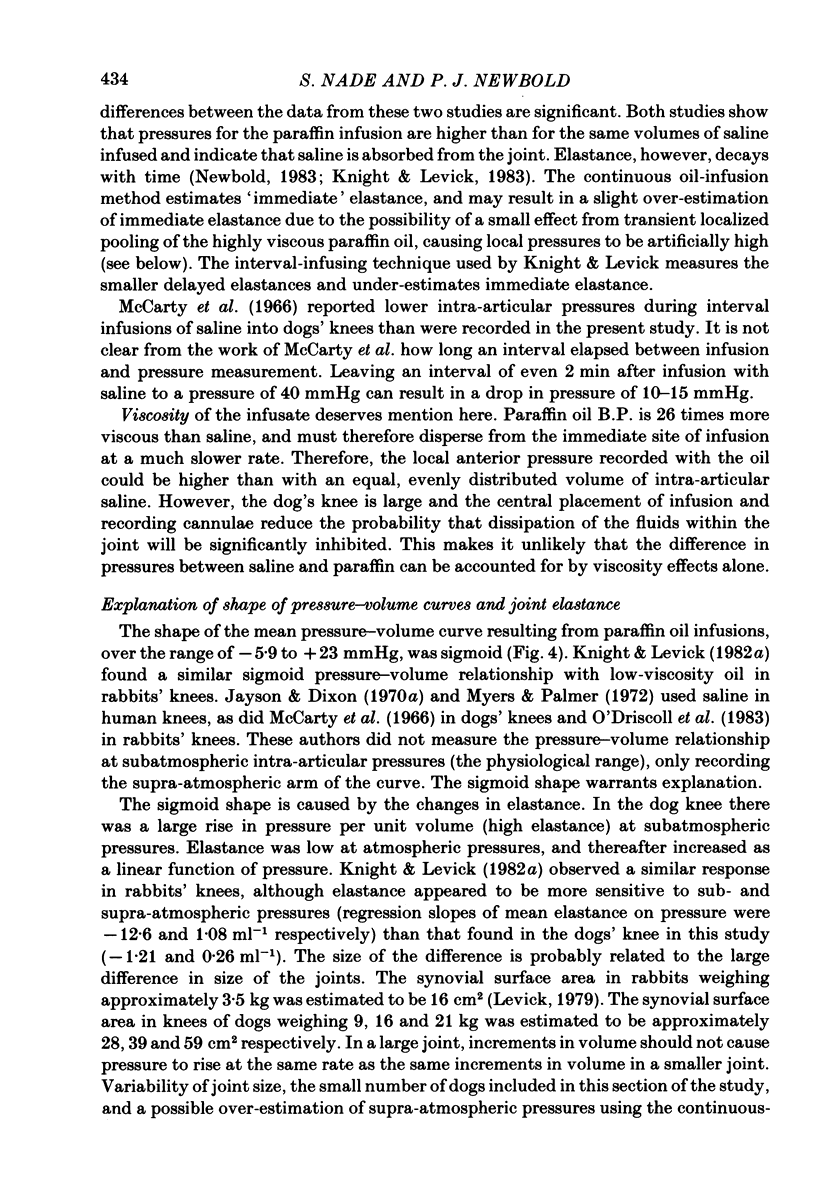
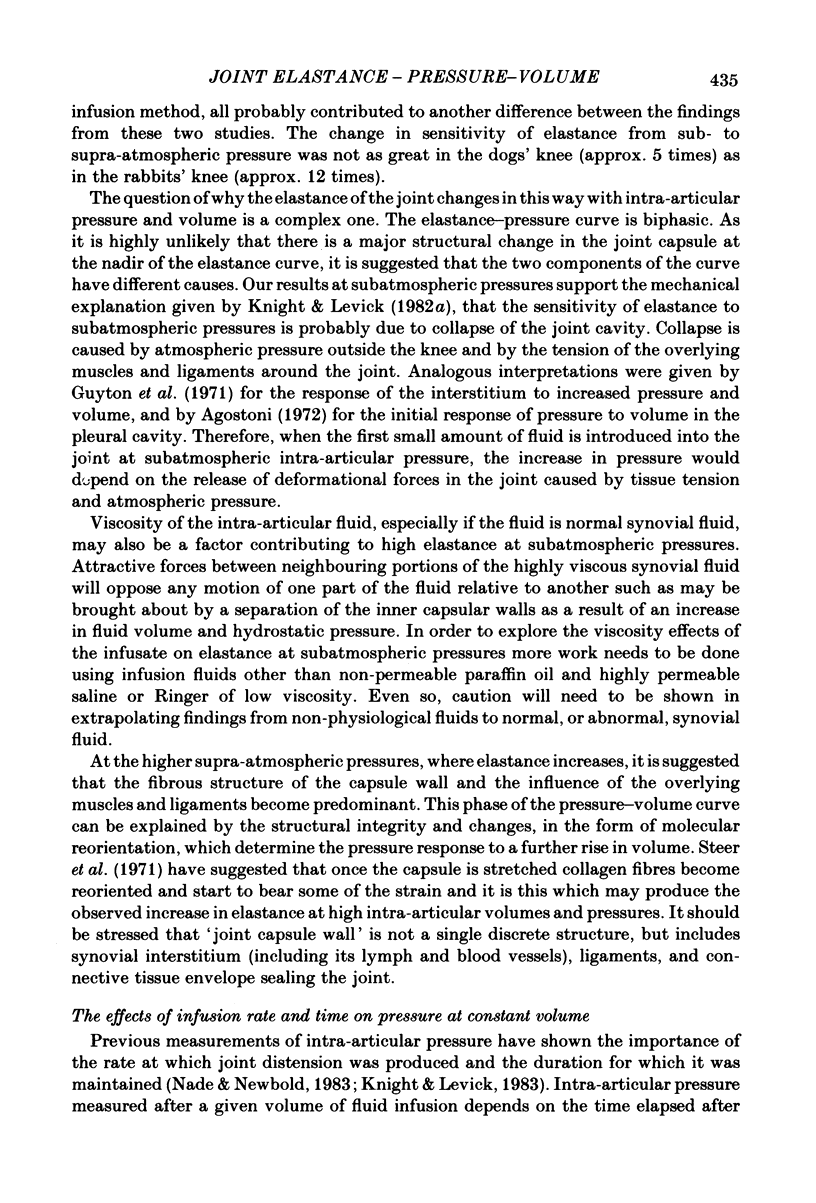
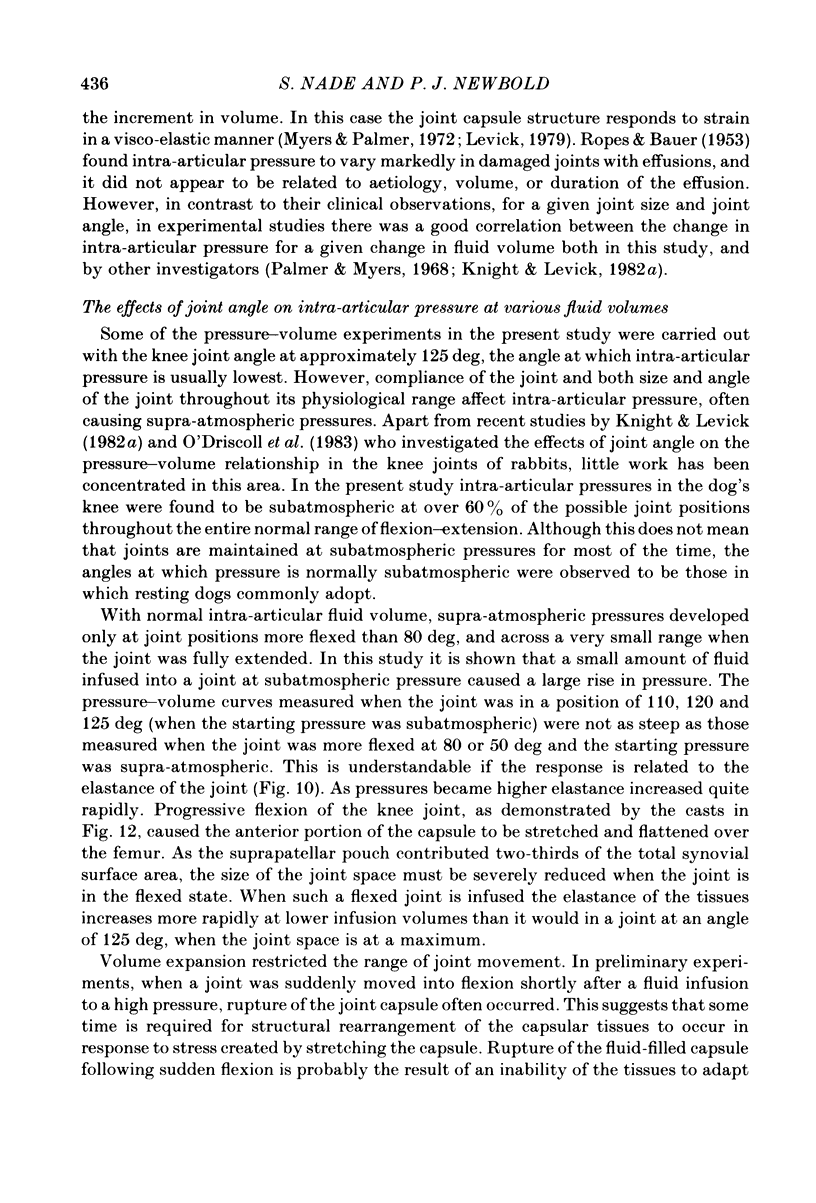
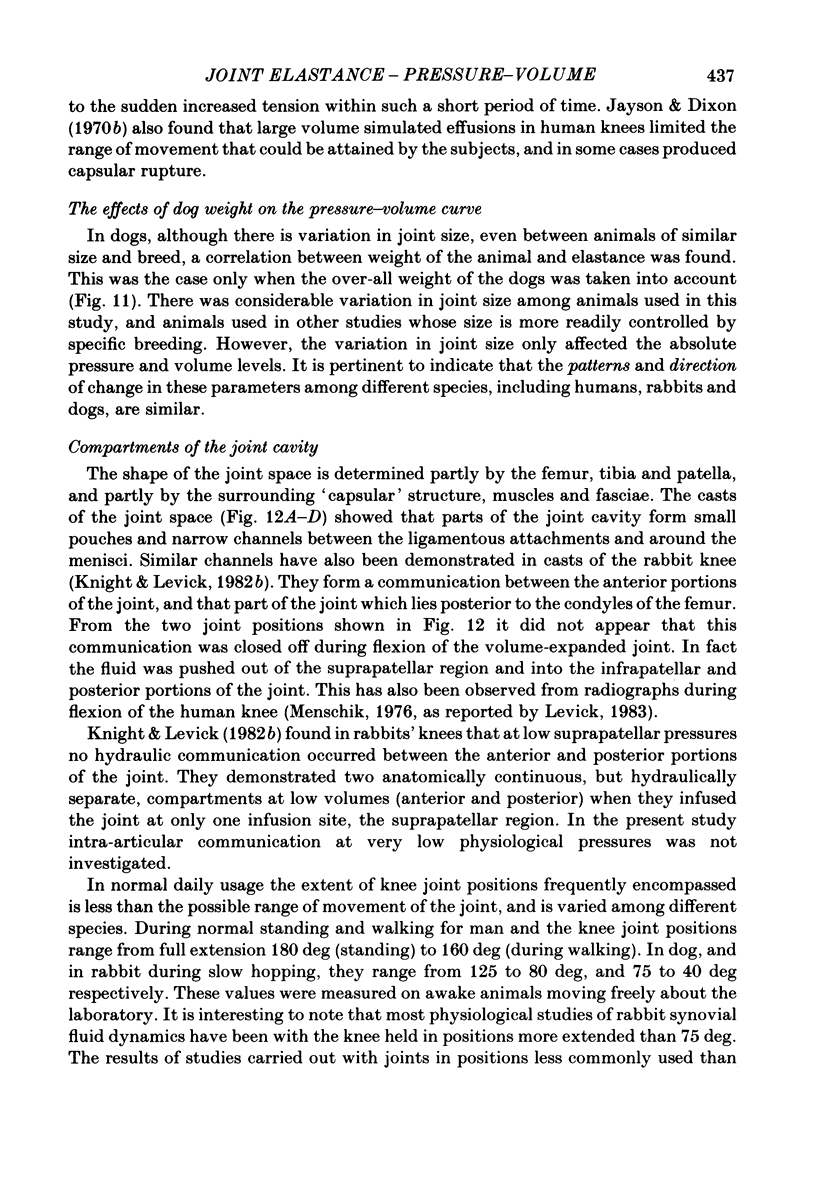
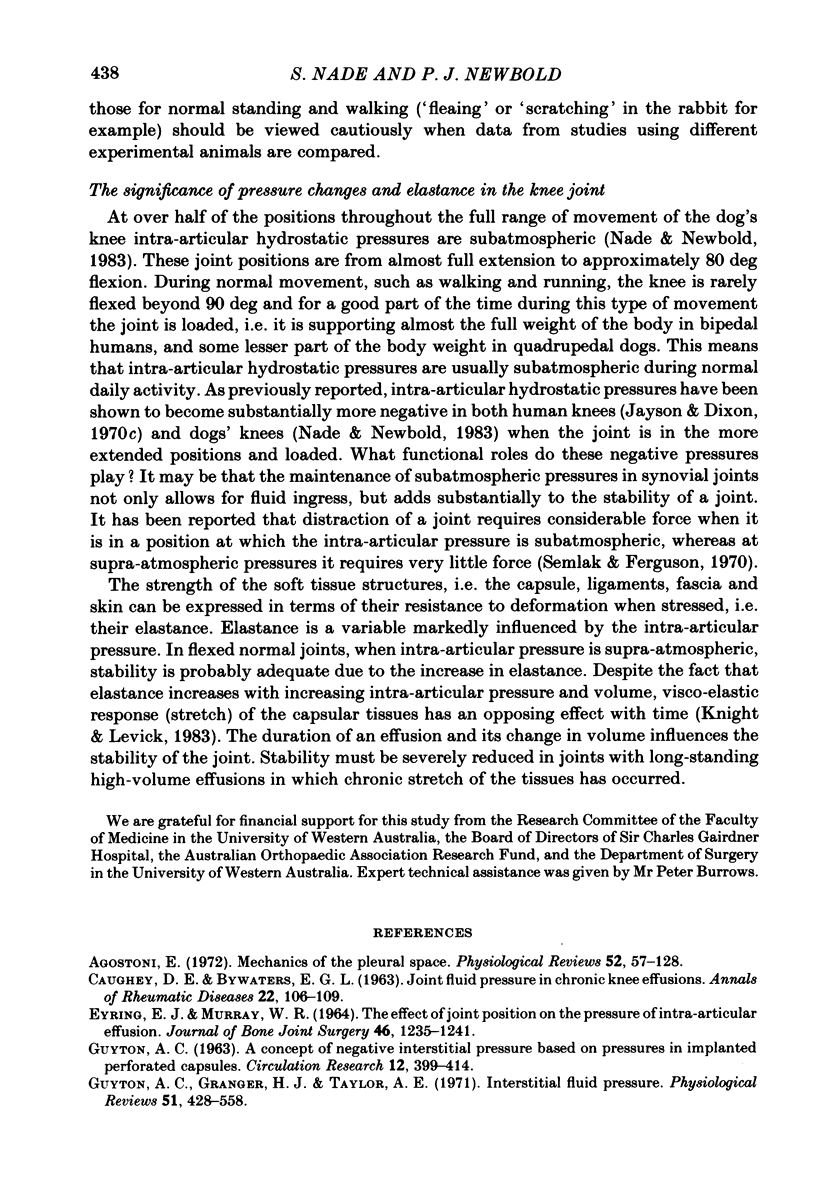

Images in this article
Selected References
These references are in PubMed. This may not be the complete list of references from this article.
- Agostoni E. Mechanics of the pleural space. Physiol Rev. 1972 Jan;52(1):57–128. doi: 10.1152/physrev.1972.52.1.57. [DOI] [PubMed] [Google Scholar]
- CAUGHEY D. E., BYWATERS E. G. Joint fluid pressure in chronic knee effusions. Ann Rheum Dis. 1963 Mar;22:106–109. doi: 10.1136/ard.22.2.106. [DOI] [PMC free article] [PubMed] [Google Scholar]
- EYRING E. J., MURRAY W. R. THE EFFECT OF JOINT POSITION ON THE PRESSURE OF INTRA-ARTICULAR EFFUSION. J Bone Joint Surg Am. 1964 Sep;46:1235–1241. [PubMed] [Google Scholar]
- GUYTON A. C. A concept of negative interstitial pressure based on pressures in implanted perforated capsules. Circ Res. 1963 Apr;12:399–414. doi: 10.1161/01.res.12.4.399. [DOI] [PubMed] [Google Scholar]
- Jayson MISt Dixon A. J. Intra-articular pressure in rheumatoid arthritis of the knee. II. Effect of intra-articular pressure on blood circulation to the synovium. Ann Rheum Dis. 1970 May;29(3):266–268. doi: 10.1136/ard.29.3.266. [DOI] [PMC free article] [PubMed] [Google Scholar]
- Jayson M. I., Dixon A. S. Intra-articular pressure in rheumatoid arthritis of the knee. 3. Pressure changes during joint use. Ann Rheum Dis. 1970 Jul;29(4):401–408. doi: 10.1136/ard.29.4.401. [DOI] [PMC free article] [PubMed] [Google Scholar]
- Jayson M. I., St Dixon A. J. Intra-articular pressure in rheumatoid arthritis of the knee. I. Pressure changes during passive joint distension. Ann Rheum Dis. 1970 May;29(3):261–265. doi: 10.1136/ard.29.3.261. [DOI] [PMC free article] [PubMed] [Google Scholar]
- Knight A. D., Levick J. R. Physiological compartmentation of fluid within the synovial cavity of the rabbit knee. J Physiol. 1982 Oct;331:1–15. doi: 10.1113/jphysiol.1982.sp014361. [DOI] [PMC free article] [PubMed] [Google Scholar]
- Knight A. D., Levick J. R. Pressure-volume relationships above and below atmospheric pressure in the synovial cavity of the rabbit knee. J Physiol. 1982 Jul;328:403–420. doi: 10.1113/jphysiol.1982.sp014273. [DOI] [PMC free article] [PubMed] [Google Scholar]
- Knight A. D., Levick J. R. Time-dependence of the pressure-volume relationship in the synovial cavity of the rabbit knee. J Physiol. 1983 Feb;335:139–152. doi: 10.1113/jphysiol.1983.sp014525. [DOI] [PMC free article] [PubMed] [Google Scholar]
- Levick J. R. The influence of hydrostatic pressure on trans-synovial fluid movement and on capsular expansion in the rabbit knee. J Physiol. 1979 Apr;289:69–82. doi: 10.1113/jphysiol.1979.sp012725. [DOI] [PMC free article] [PubMed] [Google Scholar]
- McCarty D. J., Jr, Phelps P., Pyenson J. Crystal-induced inflammation in canine joints. I. An experimental model with quantification of the host response. J Exp Med. 1966 Jul 1;124(1):99–114. doi: 10.1084/jem.124.1.99. [DOI] [PMC free article] [PubMed] [Google Scholar]
- Myers D. B., Palmer D. G. Capsular compliance and pressure-volume relationships in normal and arthritic knees. J Bone Joint Surg Br. 1972 Nov;54(4):710–716. [PubMed] [Google Scholar]
- Nade S., Newbold P. J. Factors determining the level and changes in intra-articular pressure in the knee joint of the dog. J Physiol. 1983 May;338:21–36. doi: 10.1113/jphysiol.1983.sp014657. [DOI] [PMC free article] [PubMed] [Google Scholar]
- O'Driscoll S. W., Kumar A., Salter R. B. The effect of the volume of effusion, joint position and continuous passive motion on intraarticular pressure in the rabbit knee. J Rheumatol. 1983 Jun;10(3):360–363. [PubMed] [Google Scholar]
- Palmer D. G., Myers D. B. Some observations of joint effusions. Arthritis Rheum. 1968 Dec;11(6):745–755. doi: 10.1002/art.1780110604. [DOI] [PubMed] [Google Scholar]
- Semlak K., Ferguson A. B., Jr Joint stability maintained by atmospheric pressure. An experimental study. Clin Orthop Relat Res. 1970 Jan-Feb;68:294–300. [PubMed] [Google Scholar]
- Steer G., Jayson M. I., Dixon A. S., Beighton P. Joint capsule collagen. Analysis by the study of intra-articular pressure during joint distension. Measurements in the knees of control subjects and patients with rheumatoid arthritis and Ehlers-Danlos syndrome. Ann Rheum Dis. 1971 Sep;30(5):481–486. doi: 10.1136/ard.30.5.481. [DOI] [PMC free article] [PubMed] [Google Scholar]



